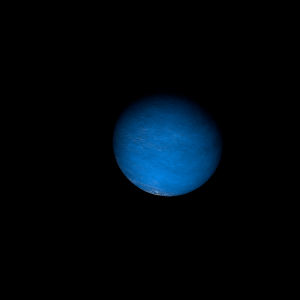|
|
Space Astro
|
Info for exoplanet "Paneve-kehe"
| Scientific (actual) data |
|---|
| Name | HD 215152 e |
| Planet status | Confirmed |
| Mass sini | 0.01091 |
| Orbital period | 25.1968 |
| Semi major axis | 0.15417 |
| Orbit eccentricity | 0.173 |
| Discovered | 2018 |
| Updated | 2018-02-20 |
| Omega | 163.9 |
| K | 0.914 |
| Publication | Published in a refereed paper |
| Detection type | Radial Velocity |
| Mass measurement type | Radial Velocity |
| Star name | HD 215152 |
| Right ascension | 340.84° |
| Declination | -6.4° |
| Mag v | 6.45 |
| Star distance | 21.5 |
| Star metallicity | -0.1 |
| Star mass | 0.77 |
| Star radius | 0.73 |
| Star sp type | K3V |
| Star temperature | 4935 |
| Star detected disc | IR Excess |
| Wikipedia article | HD 215152 e |
Back
| |
| Fictional info (?) |
|---|
| Suggested name | Paneve-kehe |
| Planet type | Planet |
| It has the longest rotation period (445 days) of any planet in its solar system and rotates in the opposite direction to most other planets.
The unfriendly surface is entirely occupied by odd primitive herbivores that feed in the air by finding nourishment in the somewhat smaller "Ofyr" at night. They are believed to be somewhat related to Difyso-qe but have 10 tentacles and vary in size from 10 to 22 cm. Most Uvimew Ik can thrive at temperatures from 40 to 60°C and prolonged periods without food. |
| Estimated population | 1600000000 |
| Atmosphere | Methane | 54% |
| Oxygen | 32% |
| Carbon dioxide | 12% |
| Water | 2% |
| Atmospheric pressure | 0.5 bar |
 |
| No known satellites |
| Google search for Paneve-kehe |
|
Website by Joachim Michaelis
|
|
|
|